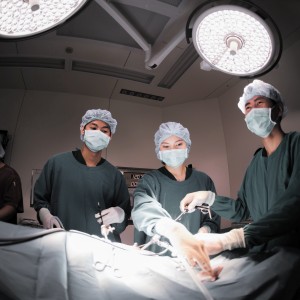A new study published in the March 25 online edition of JAMA Surgery has shown that people who underwent a laparoscopic colectomy needed fewer days of health care. Their acute and follow-up care also costed less when compared to people who had traditional open surgery.
Scientists from the United States and Norway studied national health insurance claims using data from the Truven Health Analytics MarketScan Commercial Claims and Encounters database. They focused on health care utilization, health care expenditures and patient days off from work. The study included 4,160 patients 18 to 64 years old who underwent elective laparoscopic (45.6%) or open colectomy (54.4%) during January to December 2010.
Lead author Conor P. Delaney, MD PhD, of University Hospitals Case Medical Center in Cleveland, Ohio, noted “We found that the use of minimally invasive laparoscopic approaches in a select group of patients undergoing colectomy procedures resulted in significantly lower health care costs and resource utilization compared with open surgical approaches. This may expand access and lower the cost of patient care in the long term. These results reflect the well-documented benefits of laparoscopic surgery, which include faster recovery, less pain and fewer complications.”
A colectomy refers to removing part or the entire colon as well as the rectum. The procedure typically is a treatment for a digestive health conditions, such as diverticulitis, Crohn’s disease, ulcerative colitis and colon or rectal cancer.
The laparoscopic colectomy procedures require three or four small incisions rather than a single large incision. The researchers reported that there was a $6,689 lower costs to payers with a laparoscopic procedure. In contrast, an open surgery costs $29,753 versus $23,064 for the laparoscopic approach. In the three months after open colectomy, the costs were $8,272, and rising to $21,598 after a year. In contrast, the laparoscopic procedures cost $4,176 after three months and $11,719 after a year. This was a difference of $4,096 after three months and $9,879 following the first year. Compared to the laparoscopy patients, in the year after the procedures, the open surgery patients were hospitalized a total of 2.12 times more and also spent 1.13 times more on medication.
Michael Tarnoff, MD, chief medical officer, Covidien Group at Medtronic remarked “With significantly fewer days required for health care utilization in the laparoscopic group, patients are less likely to miss days of work, further strengthening the economic benefit of these procedures which have long been associated with better patient outcomes than open surgery. In support of optimizing patient care costs and efficiencies, we continue to offer innovative and less invasive, more successful procedures for earlier diagnosis, better treatment and faster, complication-free recovery.”

